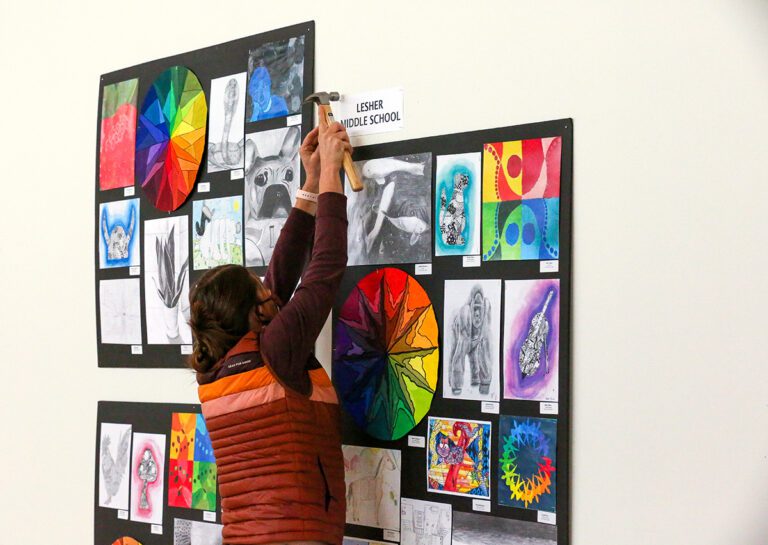I once had an art teacher who gave out very few A’s. Only the students with top skills earned high marks. Those with less technical skills would always get lower grades. As a student, I found this practice unfair and hated it when friends dropped out of art because of how it affected their GPAs. My grading policy is almost the opposite. Most of my students get A’s.
In fact, I think art should be a class where
it’s relatively easy to get an A.

Art has historically been viewed as the result of talent bestowed on a select few. However, this idea is at odds with the current belief that art should be part of the standard school curriculum for every child. If we believe that all students can benefit from art, then we have to approach art as a set of skills that are learnable by everyone. We must move away from the mindset that only talented artists deserve the highest grades.
If we believe that all students can benefit from art, then we have to approach art as a set of skills that are learnable by everyone.
Art has a reputation for being exclusive. We reinforce this image when we “weed out” students who we deem not good enough to enroll in upper-level courses or when we complain about kids being placed in our classes. Ironically, in the same breath, we bemoan how limited arts funding is.
If we want our programs supported by the public, then we have to make our courses inclusive and accessible to those of all skill levels. This means creating content that is as relevant to the student who just needs an arts credit to graduate as it is to those planning careers in art. Students should exit art programs as life-long supporters of the arts. If they leave our programs with the sense that they don’t belong, then we’ve failed them and missed an opportunity to advocate for the arts.

Content that is relevant to all students is fun and engaging. In the past, teachers told students what sort of art was valuable and decided what work students would make. Instead, the instruction of today should open a door into the world of art-related knowledge by asking learners to develop their own opinions, preferences, and connections.
We also have to evaluate and teach art holistically, which involves placing more importance on thinking and less on the final product. When content is holistic in nature, student-directed, and engaging, the classroom culture becomes one of achievement. If the art program is open and inviting, most students will meet or surpass learning goals and have fun doing it, easily earning A’s.
An art program that is inclusive and relevant to all students will lead to high rates of achievement. Each and every student is an opportunity to advocate for the arts and we must approach teaching with the mindset that all students should achieve.
Do you think art should be an easy A? Why or why not?
How often do you give out A’s in your classroom?
Magazine articles and podcasts are opinions of professional education contributors and do not necessarily represent the position of the Art of Education University (AOEU) or its academic offerings. Contributors use terms in the way they are most often talked about in the scope of their educational experiences.




